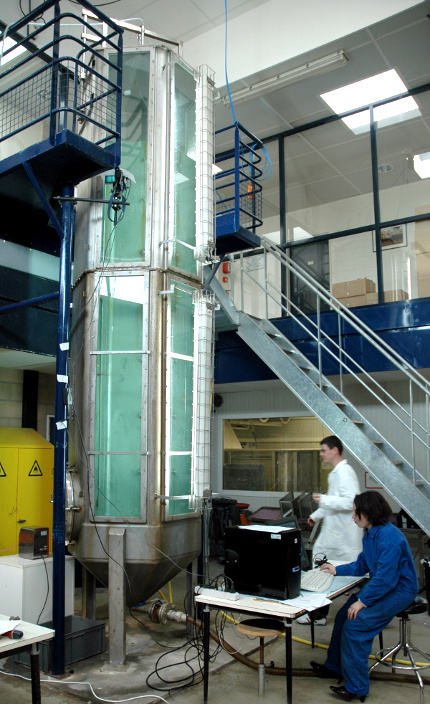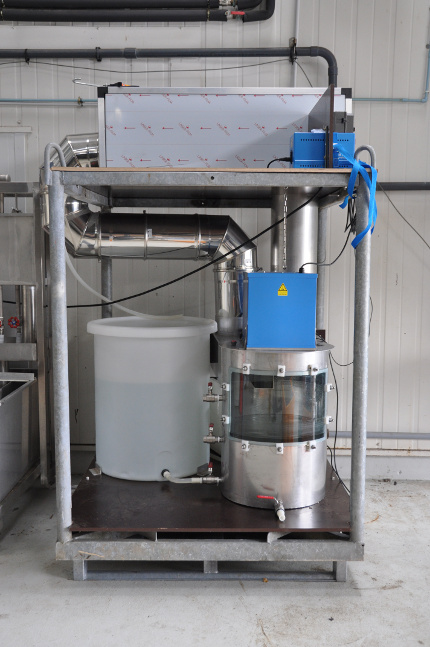
Improving Member States preparedness to face an HNS pollution of the Marine System (HNS-MS)
Lab experiments
The behaviour of chemicals at the water surface is characterised through experimentations:
Cedre Experimentation Column (CEC)
This experimentation column can be supplied with air and water at a controlled temperature. Its dimensions (5 m high and 0.8 m in diameter) make it a unique tool. It is fitted with a watertight lid, 5 valves for regular sampling of the water column at different heights and a pipe to inject the product in question located at the top or the bottom of the column which may be fitted with nozzles of various diameters to simulate varying leak rates. At the top of the column an airtight ATEX cap is equipped with an air extractor to treat explosive gases.
The protocol used to study the solubilisation kinetics is based on the principle of filming (250 frames/second) and image processing. Using specialised software, the evolution of the size of droplets is studied according to their movements, both in terms of their speed and their trajectory.

Chemical test bench
This pilot-scale tool is made of a 75L tank which can be filled either by fresh water or seawater at controlled temperature. In addition to simultaneously measuring the evaporation and dissolution of a substance, this test bench simulates the impact of wind and sun on these processes, and can therefore be used to predict the fate of a substance under different environmental conditions.

About the project
HNS-MS is a decision-support tool that Belgian and French maritime authorities as well as coastguard stations can activate in order to forecast the drift, fate and behavior of acute marine pollution by Harmful Noxious Substances (HNS) accidentally released in the marine system.
Contact us
Copyright © 2015–2025 HNS-MS Consortium
 HNS-MS has been funded by DG-ECHO under agreement ECHO/SUB/2014/693705 and runs from 1 January 2015 to 31 March 2017.
HNS-MS has been funded by DG-ECHO under agreement ECHO/SUB/2014/693705 and runs from 1 January 2015 to 31 March 2017.